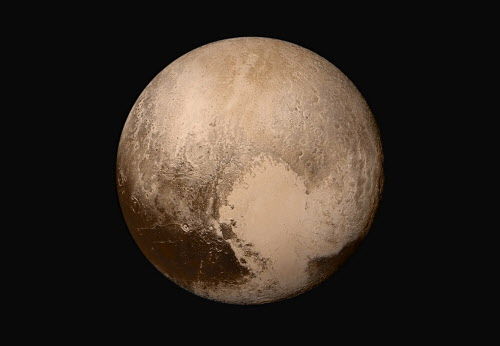The real color images of Pluto captured by New Horizons show it to have a variety of light and dark features — with an overall rusty red tint.
At a NASA press conference Friday, Michael Summers, a New Horizons co-investigator from George Mason University, offered a possible explanation.
He said sunlight is breaking up sublimated methane into complex hydrocarbons, such as ethylene and acetylene.
They in turn are converted into tholins — reddish hydrocarbons that fall to the surface and give the planet its hue.





